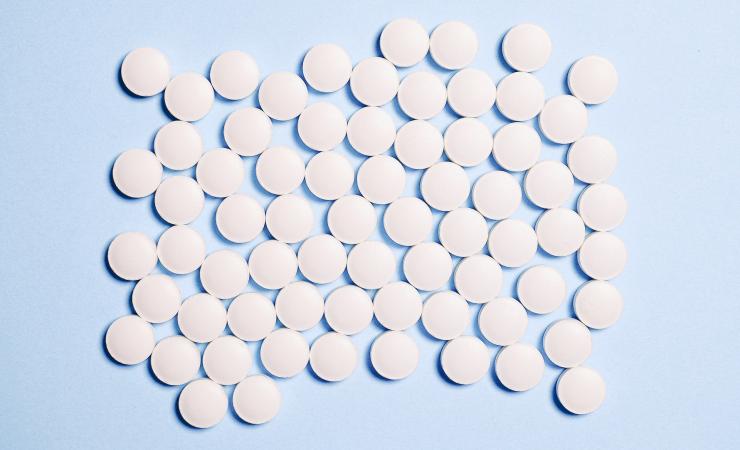When your liver, kidneys, pancreas, blood vessels, or nervous system become injured, the composition of elements in your blood is slightly changed. Certain molecules in the blood or other bodily fluids, known as biomarkers, can indicate that an injury has occurred, as well as highlighting the severity, and potential clinical outcome of the injury.
Biomarkers are nothing new, but finding good biomarkers that are sensitive enough to pick up an injury early on; specific enough to identify the cause and location of the injury; and potentially even helpful in deciding how to treat that injury, is challenging. A specific class of molecules called microRNAs could prove to be reliable tools for identifying a large range of physiological injuries, and are currently under investigation by the Innovative Medicines Initiative (IMI) TransBioLine projct, among other more traditional types of protein biomarkers.
MicroRNAs are small, single-stranded RNA fragments that don’t encode proteins, and their many roles in regulating gene expression and protein levels within the body remain somewhat mysterious.
“The scope of their biological functions is not completely elucidated,” says Dr Sophia Samodelov, project coordinator of TransBioLine on behalf of the University of Zurich.
However, researchers have found that specific microRNAs can indicate when a particular organ is under stress. When the liver, pancreas, kidneys, blood vessels or nervous system are injured, microRNA levels change slightly in composition.
“Some microRNAs are encoded within particular organs, so that when that particular organ also has an injury, specific microRNAs can become elevated or decreased, due to that injury,” explains Samodelov. For example, microRNA-122 is increased in the blood of patients with certain types of liver injury.
Tracking microRNAs in the blood after someone has taken a particular medication can highlight whether that drug puts strain on the liver, kidney, or pancreas, for example. This information is vital during drug development to ensure the safety of novel therapies. Oftentimes, unwanted toxicities of novel medications are not identified until post-marketing, so more sensitive biomarkers implemented earlier in drug development will help decrease the frequency of unexpected adverse events.
Further down the line, doctors make decisions regarding which drugs to prescribe to each individual patient based on a slew of factors, and they need to know the side effects and potential physiological impacts of each drug. Improved biomarkers will help physicians to choose therapies that have the most benefits for the patient with the least risk of temporary or potentially long-term side effects in their particular case.
More specific biomarkers will inform drug developers and clinicians on the cause and scope of an injury, which will allow better safety monitoring in all cases where a therapy may cause some injury in the short-term, but ultimately be life-saving. The project is working to get these biomarkers qualified and approved by the US Food and Drug Administration (FDA) and the European Medicines Agency (EMA). This will mean that regulators will formally accept these novel biomarkers as good indicators of drug safety.
“The benefit of having qualified a microRNA as a biomarker beforehand is that the FDA or EMA will see it while evaluating the safety of a new drug or therapy and say, ‘oh yes, that one we know, we’ve reviewed it, we know it is a good one’. It’s clear cut,” says Samodelov.
Huge datasets of TransBioLine biomarker candidates have been collected and are being curated by the project already, including complete microRNA profiling of almost 200 healthy volunteers. This will help researchers and clinicians understand the levels of microRNAs that are considered normal and healthy, versus changes that occur due to disease or injury. Samodelov hopes that when the project wraps up, these datasets will be available to other researchers.
“These are very valuable datasets that we’re generating,” she says, explaining that robust and standardised methods for analysing big data are needed to sort through the datasets and that thousands of patients have already volunteered their data, in addition to the normal healthy subjects.
Several small and medium-sized enterprises (SMEs) are involved in TransBioLine , and it’s one of these, TAmiRNA, which has developed a sample and data analysis pipeline for microRNAs, called the miRNA Next–Generation-Sequencing Discovery Assay (miND) pipeline.
“The pipeline is open access, open source and can be used by anybody to facilitate the analysis of microRNA sequencing data,” says Samodelov. “As it is big data and this is a newer research field, we needed to find a way to standardise sample and data handling and data analysis.”
There are legal, ethical, financial and logistical issues with making resulting datasets publicly accessible, but Samodelov hopes that the information will be available to researchers who will work on similar projects to TransBioLine in the future.
“My biggest dream for TransBioLine is to make all of the data that we have accumulated sustainable,” she concludes. TransBioLine anticipates that the biomarkers will be qualified by 2027.
TransBioLine is supported by the Innovative Medicines Initiative, a partnership between the European Union and the European pharmaceutical industry.
